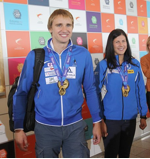Lasting Liberty Day
27 March 2013 marked a very special day for Estonia and its citizens. On that day, the Republic of Estonia had been independent longer in the post-Cold War period than it was in the interwar period.
More specifically, from the retreat of the German Reich forces on 11 November 1918 until the beginning of the Soviet Union occupation on 17 June 1940, Estonia was independent for 7889 consecutive days. However, on 27 March 7890 days had passed since Estonia regained its independence on 20 August 1991.
This symbolic enumeration led to the creation of Lasting Liberty Day, and Estonians around the country and all over the world celebrated their freedom and expressed their gratitude to those who have contributed to making the dream of life in a free and independent Estonia a reality.
Double Victory for Estonia in World Fencing Championships 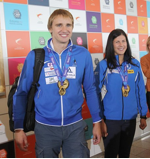
Estonian fencers Nikolai Novosjolov and Julia Beljajeva won the men’s and women’s individual epee tournaments at the World Fencing Championships in Budapest in August.
The world champions receive a warm welcome from family, friends, and media after returning to Tallinn.
Culture Heritage Year
The year 2013 was dedicated to cultural heritage in Estonia. The year’s various events and activities were dedicated to exploring questions such as: what is cultural heritage? How does it come about? Who does it belong to and how does it affect us?
The objective of the themed year was for people to acknowledge the cultural heritage all around them and understand that it needs to be preserved by everyone. After all, cultural heritage is the foundation of Estonian identity. And the guiding thought for the year was “There is no heritage without an heir.” What we preserve today and how we do it will provide value and meaning for future generations.
UN Secretary-General Ban Ki-moon Visit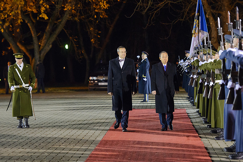
UN Secretary-General Ban Ki-moon was on an official visit to Estonia with his wife Ban Soon-taek on 15-16 November. In addition to Foreign Minister Urmas Paet, the UN secretary-general also met with President of the Republic Toomas Hendrik Ilves, President of the Riigikogu Ene Ergma, and Prime Minister Andrus Ansip.
While two different leaders of the League of Nations had come to Estonia in the interwar period, Ban Ki-moon’s visit was the first time that a UN secretary-general had visited Estonia since regaining independence.
President Toomas Hendrik Ilves formally welcomes UN Secretary-General Ban Ki-moon at Kadriorg Palace.
First Estonian Satellite Launched
Students from the University of Tartu, the Estonian Aviation Academy, Tallinn University of Technology and the University of Life Sciences collaborated to launch Estonia’s first satellite, EstCube-1, into orbit on 4 May 2013.
The satellite’s launch was achieved using a novel propulsion technology called electric solar wind sail, which uses the flow of electrically charged particles emanating from the sun and has the potential to revolutionise transportation within the solar system.
Above, an illustration of Estonia’s first satellite, EstCube-1.
Finland & Estonia Digitally Sign Treaty 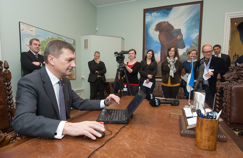
In early December, Estonian Prime Minister Andrus Ansip and Finnish Prime Minister Jyrki Katainen signed an agreement on the common development of e-services. And, in the spirit of e-cooperation, the prime ministers also made history by making this the first ever international accord to be signed using digital signatures.
Digital signatures save time and money, and add an estimated 2% to Estonia’s GDP. With two advanced and interconnected economies like Estonia and Finland, the potential benefits can be substantial. Finally, the prime ministers hope that if it is successful between two countries, it can inspire the introduction of digital signatures across the entire European Union. Prime Minister Andrus Ansip digitally signing e-services treaty with Finland.
Margus Hunt Drafted by Cincinnati Bengals
On 26 April, the second Estonian-born athlete (after Michael Roos) was drafted into the NFL by the Cincinnati Bengals.
After originally in the US to train for the 2012 track and field world championships (in shot put and discus), Hunt became interested in American football through video games.
Now, the 203 cm and 127kg Hunt, who also happens to play the piano, is in the middle of his first season and has become one of the highest-paid active Estonian athletes.
Estonia Begins Work in UN Human Rights Council
This year, Estonia began its activities as a member of the United Nations Human Rights Council.
As a member of the HRC, Estonia is actively contributing to the protection and promotion of human rights and fundamental freedoms according to its foreign policy priorities in the human rights field. More specifically, Estonia is concentrating on standing for the rights of women, children and indigenous peoples as well as supporting freedom of expression and media, including internet freedom and fight against impunity.
Estonia is a member of the UN Human Rights Council for the period 2013-2015.
“Tangerines” Wins Multiple Awards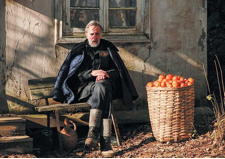
A co-production of Estonia’s Allfilm studio and Georgia’s Cinema24, “Tangerines” conveys a story from a tragic period in Georgian history that speaks to Georgians and Estonians at the same time.
After a season of breaking the viewing record in Georgia, it was sold in Cannes, screened in Palm Springs, and won prestigious prizes at Warsaw and Mannheim-Heidelberg, the film was truly a global success story for cultural cooperation between Estonia and Georgia.
Students Rank Highly in PISA Test
The OECD PISA test is designed to measure the educational level of 15-year-olds in 65 countries. Estonian students did very well in all three categories: reading, mathematics, and science, ranking 4th, 4th, and 2nd in Europe and 11th, 11th, and 6th in the world, respectively. Estonian students’ score grew in each sector, the number of least-achieving students has been lowered, and the percentage of highest-achieving students has increased. Estonian teachers, students, parents, and administrators can certainly be proud of these achievements.
Estonian Ministry of Foreign Affairs

